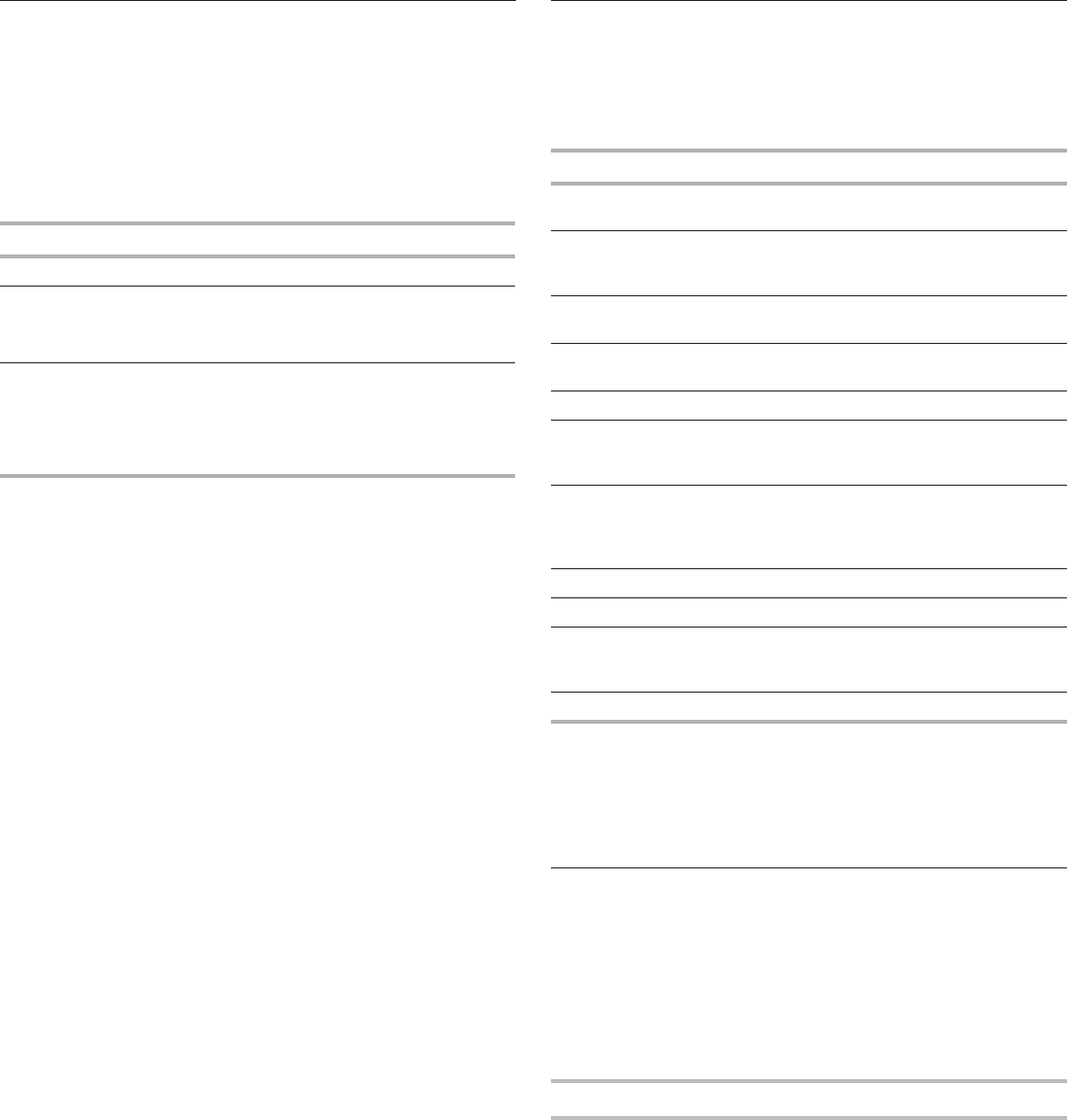Manual
Table Of Contents
- Microwave Drawer Safety
- Parts and Features
- Microwave Drawer controls
- Microwave Drawer use
- Microwave Drawer care
- Troubleshooting
- Assistance or Service
- Sécurité du tiroir à micro-ondes
- Pièces et caractéristiques
- Commandes du tiroir à micro-ondes
- Utilisation du tiroir à micro-ondes
- Caractéristiques des aliments
- Guide de cuisson
- Ustensiles de cuisson et vaisselle
- Papier d’aluminium et métal
- Puissance de cuisson aux micro-ondes
- Cuisson manuelle
- Cuisson par étapes
- Mise en marche automatique
- Réglage du degré de cuisson
- Réchauffage (sans détection)
- Beverage Center (centre de boissons)
- Décongeler
- Maintien au chaud
- Faire fondre/ramollir/faire chauffer
- Renseignement sur la cuisson par détection
- Réchauffage avec détection
- Sensor Popcorn (maïs éclaté par détection)
- Cuisson par détection
- Entretien du tiroir à micro-ondes
- Dépannage
- Assistance ou dépannage

8
Cooking Guidelines
Cooking Time
Monitor the cooking time. Cook for the shortest amount of time
indicated and add more as needed. Food severely overcooked
can smoke or ignite.
To test for doneness, insert a thermometer in a thick or dense
area away from fat or bone. Do not leave the thermometer in the
food during cooking, unless it is approved for microwave use.
Use the following chart when checking for doneness:
Food Recommended Temperature
Fish 145°F (63°C)
Pork
Ground beef/veal/lamb
Egg dishes
160°F (71°C)
Leftovers
Refrigerated deli and carry-out
"fresh" food
Whole, pieces, and ground
turkey/chicken/duck
165°F (74°C)
Covering
Covering food helps retain moisture, shorten cook time, and
reduce spattering. Use the lid supplied with cookware. If a lid is
not available, wax paper, paper towels, or plastic wrap approved
for microwave drawers may be used. Plastic wrap should be
turned back at one corner to provide an opening to vent steam.
Condensation on the door and cavity surfaces is normal during
heavy cooking.
Stirring and Turning
Stirring and turning redistribute heat evenly to avoid overcooking
the outer edges of food. Stir from outside to center. If possible,
turn food over from bottom to top.
Arranging
If heating irregularly shaped or different sized foods, arrange the
thinner parts and smaller sized items toward the center. If cooking
several items of the same size and shape, place them in a ring
pattern, leaving the center of the ring empty.
Piercing
Before heating, use a fork or small knife to pierce or prick foods
that have a skin or membrane, such as potatoes, egg yolks,
chicken livers, hot dogs, and sausage. Prick in several places to
allow steam to vent.
Shielding
Use small, flat pieces of aluminum foil to shield the thin pieces of
irregularly shaped foods, bones and foods such as chicken wings,
leg tips and fish tail. See the “Aluminum Foil and Metal” section
first.
Standing Time
Food will continue to cook by the natural conduction of heat even
after the microwave cooking cycle ends. The length of standing
time depends on the volume and density of the food.
Cookware and Dinnerware
Cookware and dinnerware must fit on the turntable. Always
use oven mitts or pot holders when handling because any dish
may become hot from heat transferred from the food. Do not
use cookware and dinnerware with gold or silver trim. Use the
following chart as a guide, then test before using.
MATERIAL RECOMMENDATIONS
Aluminum Foil,
Metal
See “Aluminum Foil and Metal” section.
Browning Dish Bottom must be at least 3/16" (5 mm)
above the turntable. Follow manufacturer’s
recommendations.
Ceramic Glass,
Glass
Acceptable for use.
China,
Earthenware
Follow manufacturer’s recommendations.
Melamine Follow manufacturer’s recommendations.
Paper: Towels,
Dinnerware,
Napkins
Use nonrecycled and those approved by
the manufacturer for microwave
drawer use.
Plastic: Wraps,
Bags, Covers,
Dinnerware,
Containers
Use those approved by the manufacturer
for microwave drawer use.
Pottery and Clay Follow manufacturer’s recommendations.
Silicone Bakeware Follow manufacturer’s recommendations.
Straw, Wicker,
Wooden
Containers
Do not use in microwave drawer.
Wax Paper Acceptable for use.
To Test Cookware or Dinnerware for Microwave Use:
1. Place cookware or dinnerware in microwave drawer with
1 cup (250 mL) of water beside it.
2. Cook at 100% cooking power for 1 minute.
Do not use cookware or dinnerware if it becomes hot and the
water stays cool.
Aluminum Foil and Metal
Always use oven mitts or pot holders when removing dishes from
the microwave drawer.
Aluminum foil and some metal can be used in the microwave
drawer. If not used properly, arcing (a blue flash of light) can occur
and cause damage to the microwave drawer.
When using aluminum foil, only use small, flat pieces placed
smoothly on the food. Foil should not come closer than one inch
to any surface of the microwave drawer.
OK for Use
Racks and bakeware supplied with the microwave drawer (on
some models), aluminum foil for shielding, and approved meat
thermometers may be used with the following guidelines:
■ To avoid damage to the microwave drawer, do not allow
aluminum foil or metal to touch the inside cavity walls, ceiling,
or floor.
■ To avoid damage to the microwave drawer, do not allow
contact with another metal object during microwave cooking.










